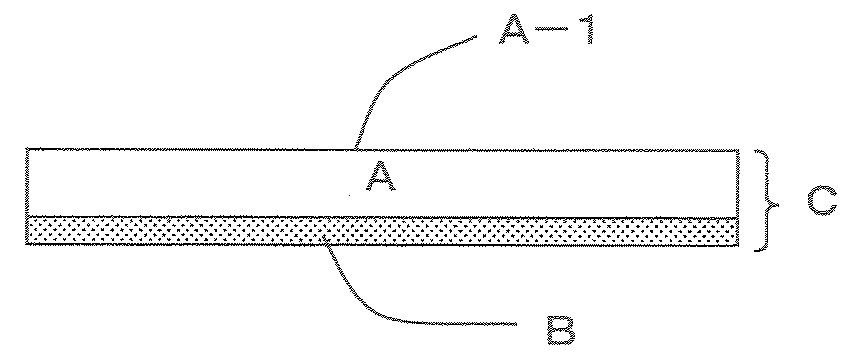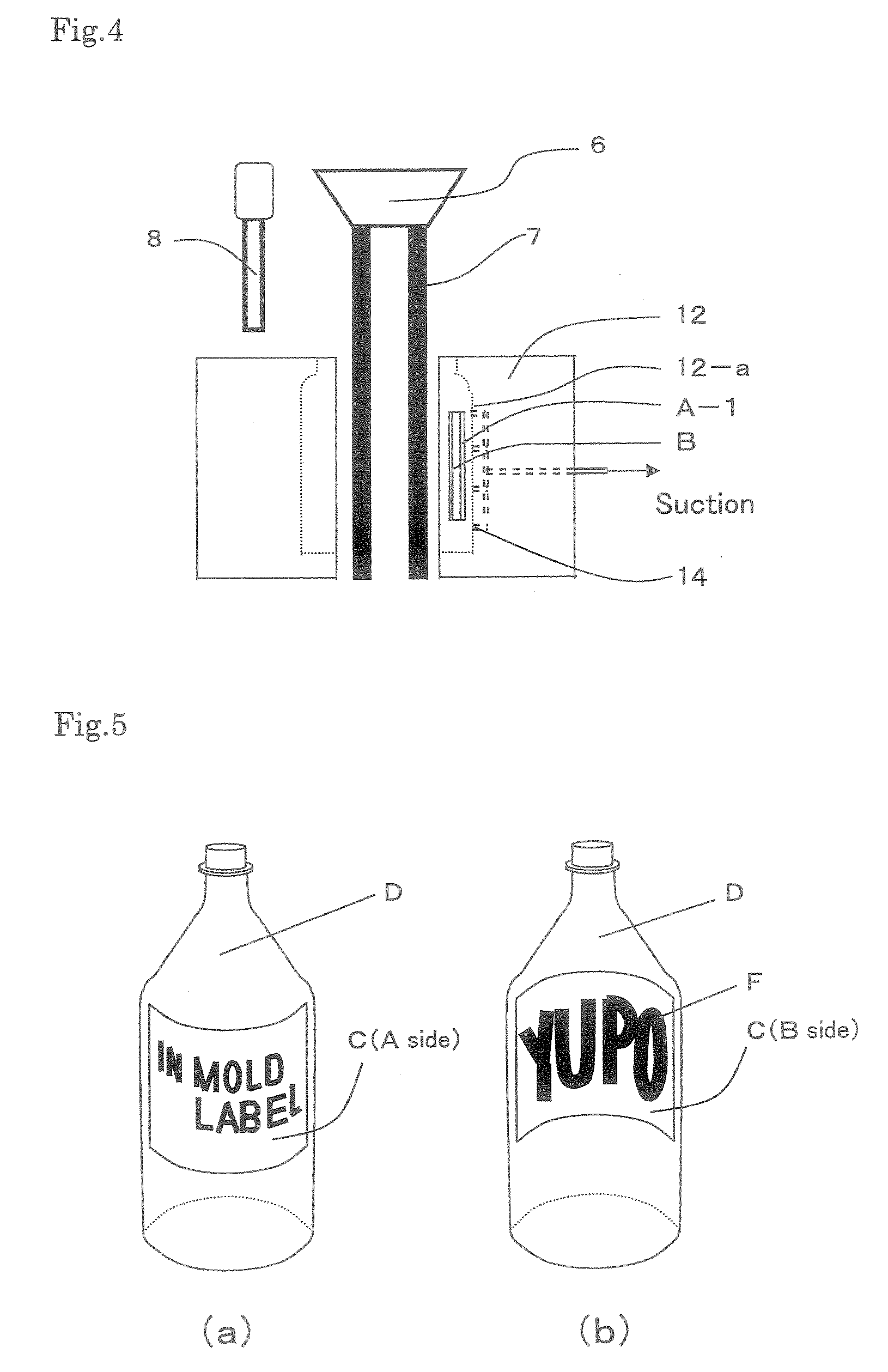Labeled In-Mold Shaped Article, and In-Mold Label
a technology of in-mold shaped articles and labels, which is applied in the direction of identification means, instruments, seals, etc., can solve the problems of peelability and the inability to satisfy the strong adhesion of the label to the shaped articl
- Summary
- Abstract
- Description
- Claims
- Application Information
AI Technical Summary
Benefits of technology
Problems solved by technology
Method used
Image
Examples
preparation example 1
Preparation of Surface-Treating Agent
[0061]500 parts by weight of diallylamine hydrochloride (aqueous solution having a concentration or 60% by weight), 13 parts by weight of acrylamide (aqueous solution having a concentration of 40% by weight) and 40 parts by weight of water were put into a reactor equipped with a reflux condenser, a thermometer, a dropping funnel, a stirrer and a gas-introducing duct, and heated up to an inner temperature of 80° C. with introducing nitrogen gas thereinto. With stirring, a polymerization initiator and 30 parts by weight of ammonium persulfate (aqueous solution having a concentration of 25% by weight) were dropwise added to it via the dropping funnel, taking 4 hours. After the addition, this was reacted for 1 hour to obtain a viscous pale yellow liquid. 50 g of it was taken out, and poured into 500 ml of acetone to produce a white precipitate. The precipitate was taken out through filtration, well washed twice with 100 ml of acetone, and then dried ...
preparation example 2
Preparation of Surface-Treated Heavy Calcium Carbonate
[0062]40% by weight of heavy calcium carbonate (Nippon Cement's dry-ground powder having a mean particle size of 8 μm) and 60% by weight of water were fully stirred and mixed to give a slurry. The surface-treating agent prepared in Preparation Example 1 was added to it in an amount of 0.06 parts by weight relative to 100 parts by weight of heavy calcium carbonate. Using a table attritor-type medium stirring mill (glass beads having a diameter of 1.5 mm; filling factor 170%; peripheral speed 10 m / sec), this was wet-ground. Next, 50 parts of a mixture consisting essentially of sodium C14 alkanesulfonate and sodium C16 alkanesulfonate (aqueous solution having a concentration of 2% by weight) was added to it, and stirred. Next, this was classified through a 350-mesh screen, and the slurry having passed through the 350-mesh screen was dried with a medium-fluidized drier (Nara Machinery's MSD-200). The mean particle size of the obtaine...
production example 1
Production-1 of Substrate Layer A
[0063]The thermoplastic resin composition (a) was kneaded in an extruder set at 230° C., then fed to an extrusion die set at 250° C. and sheetwise extruded out through it. Then, this was cooled with a cooling device to obtain an unstretched sheet. The unstretched sheet was heated at 140° C., and stretched 4-fold in the machine direction. The thermoplastic resin composition (c) was kneaded in an extruder set at 250° C., then sheetwise extruded out, and laminated on the back surface of the above 4-fold-stretched film. Then, the thermoplastic resin composition (d) was kneaded in an extruder set at 250° C., and sheetwise extruded out to be laminated on the front surface of the above 4-fold-stretched film, thereby producing a three-layered laminate film. Next, the three-layered laminate film was cooled to 60° C., then again heated at about 140° C. using a tenter oven and stretched 10-fold in the cross direction, and thereafter this was annealed in a heat-...
PUM
| Property | Measurement | Unit |
|---|---|---|
| Temperature | aaaaa | aaaaa |
| Temperature | aaaaa | aaaaa |
| Temperature | aaaaa | aaaaa |
Abstract
Description
Claims
Application Information
 Login to View More
Login to View More - R&D
- Intellectual Property
- Life Sciences
- Materials
- Tech Scout
- Unparalleled Data Quality
- Higher Quality Content
- 60% Fewer Hallucinations
Browse by: Latest US Patents, China's latest patents, Technical Efficacy Thesaurus, Application Domain, Technology Topic, Popular Technical Reports.
© 2025 PatSnap. All rights reserved.Legal|Privacy policy|Modern Slavery Act Transparency Statement|Sitemap|About US| Contact US: help@patsnap.com



